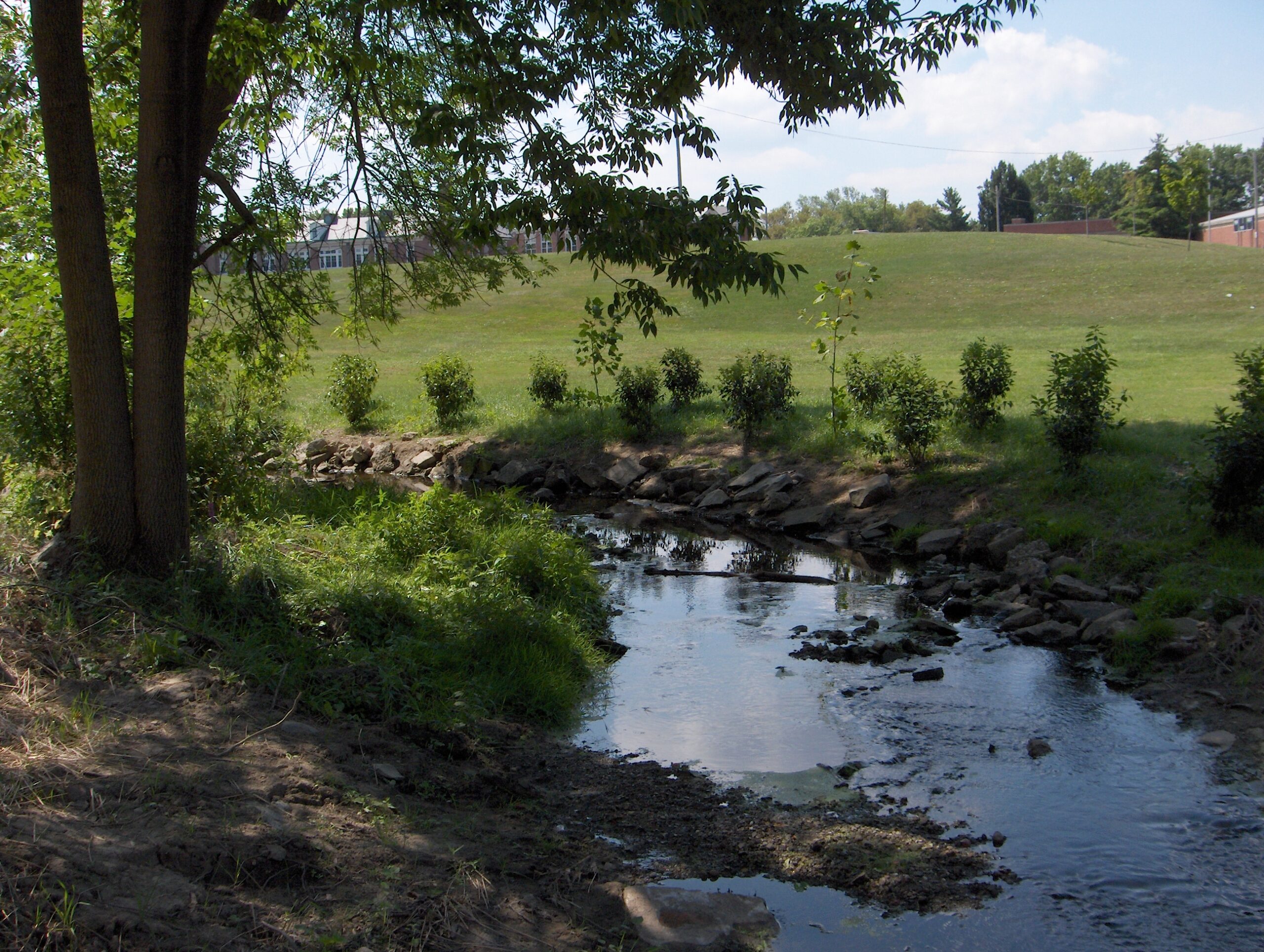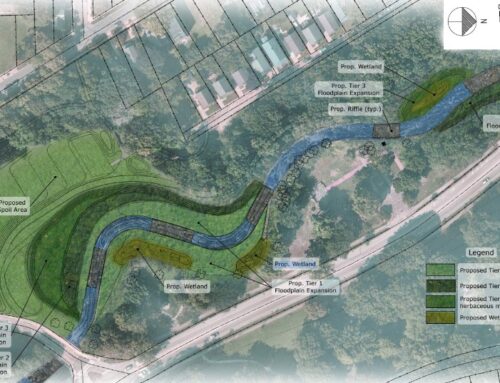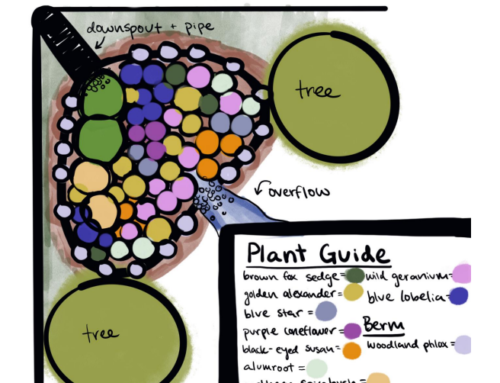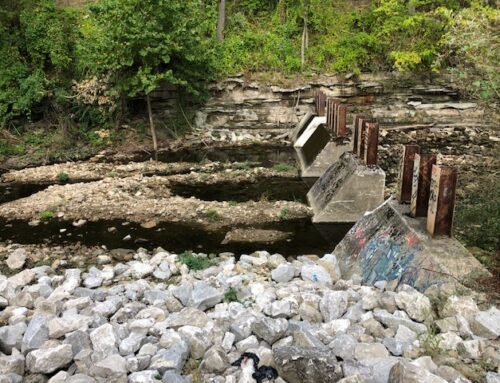[et_pb_section fb_built=”1″ admin_label=”section” _builder_version=”3.22″][et_pb_row admin_label=”row” _builder_version=”3.25″ background_size=”initial” background_position=”top_left” background_repeat=”repeat”][et_pb_column type=”4_4″ _builder_version=”3.25″ custom_padding=”|||” custom_padding__hover=”|||”][et_pb_text admin_label=”Text” _builder_version=”4.8.2″ background_size=”initial” background_position=”top_left” background_repeat=”repeat” hover_enabled=”0″ sticky_enabled=”0″]
In 2007, the Doan Brook Watershed Partnership completed a 400′ stream restoration project on the south branch of the Doan. The project re-established the in-stream habitats that had been destroyed by channelization, entrenchment and culverting – creating meanders, reconnecting the stream with its floodplain and establishing a narrow riparian corridor with native plants.
The fact that this project site is on a campus shared by three Shaker Heights public schools made it a priority for the Partnership. Not only did we achieve ecological improvement through the stream reconstruction, but a very important educational benefit was also realized.
2011 Update: Thanks to a grant from the Native Plant Society and matching funds from the Shaker Schools Facilities Department, the Stream Corridor Project expanded the width of the corridor from 25′ to 50′ on either side of the Doan Brook as it traverses the Shaker School Campus, with native trees, shrubs and plants. The expanded riparian corridor will increase its ecosystem services, including filtering pollutants, diminishing erosion, increasing biodiversity and cooling in-stream water temperatures. Since the first phase of the stream restoration at this site, teachers from Shaker Heights High School, Woodbury and Onaway Elementary have utilized the stream and its corridor as a land-lab for science classes. By expanding the width and diversity of the site, the quality of the land lab is also increased.
With the Cleveland Museum of Natural History, DBWP hosted a bioblitz at the stream site in September, 2011. Over 120 high school students from five classes took an inventory of plants and animals in the stream and along its banks. This bioblitz created a baseline data set to compare with inventories in future years, which we hope will show more biodiverse results after the riparian corridor is expanded.
Despite cold and rainy conditions, over 60 Shaker student volunteers assisted with the expansion and planting on October 18, 2011.
[/et_pb_text][/et_pb_column][/et_pb_row][/et_pb_section]






Leave A Comment